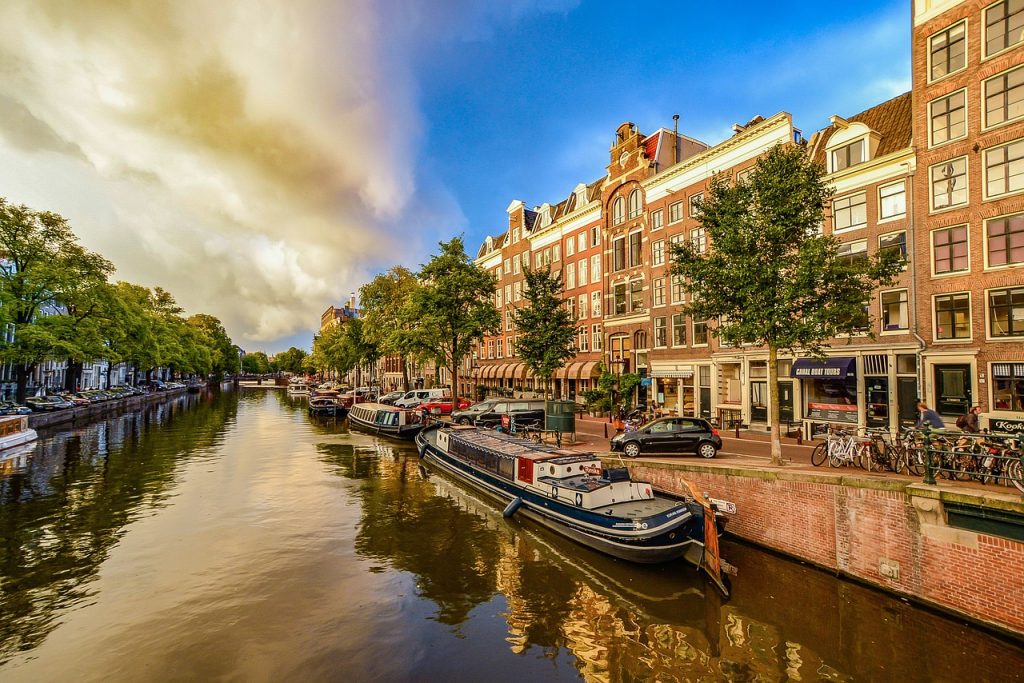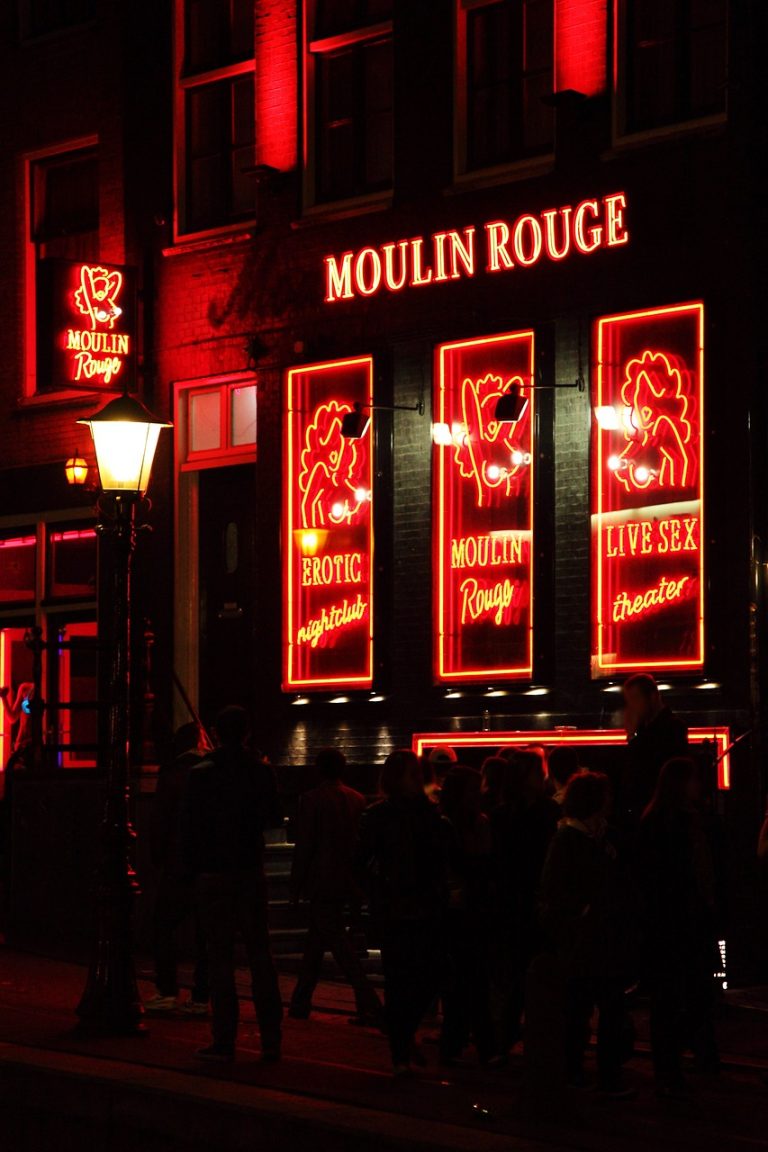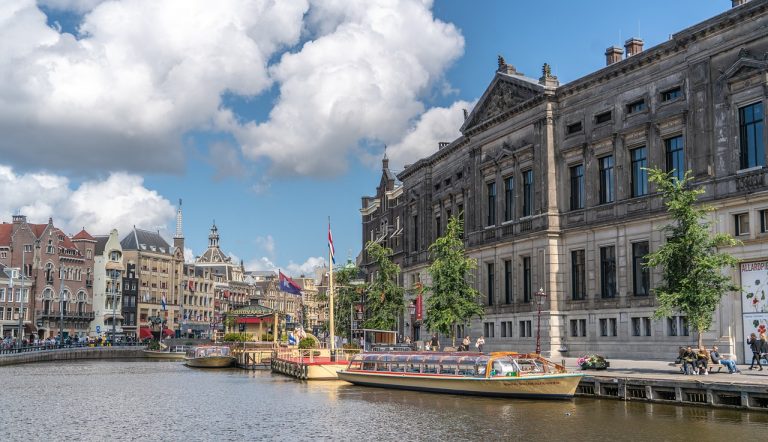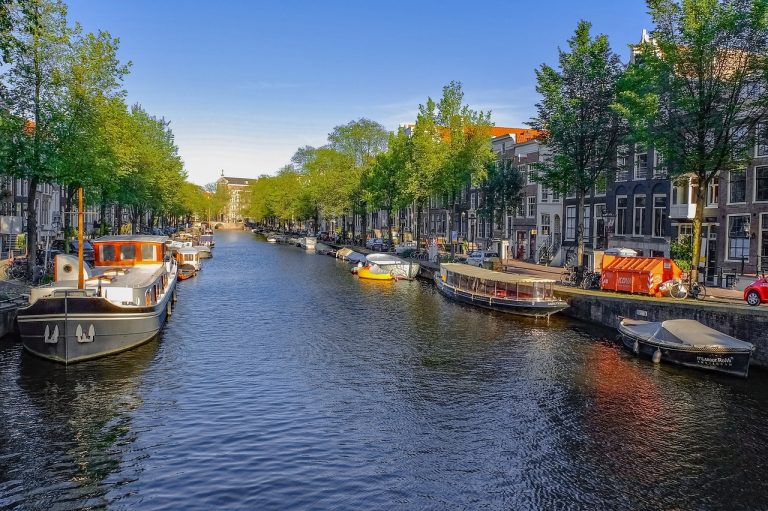Amsterdam Netherlands Video
Public Transportation in Amsterdam Netherlands: A Complete Guide
Amsterdam, the capital city of the Netherlands, is known for its efficient and well-connected public transportation system. Navigating through the city is made easy with a variety of transportation options available to both residents and visitors. This guide provides comprehensive information about public transportation in Amsterdam, including details about the various modes of transport, ticketing options, and tips for getting around the city.
Trains
- Amsterdam Centraal Station: The main train station in Amsterdam, located in the heart of the city. It serves as a major transportation hub, connecting various national and international destinations.
- Intercity Trains: These trains provide fast and direct connections between major cities in the Netherlands, such as Rotterdam, The Hague, and Utrecht. They offer comfortable seating and amenities for longer journeys.
- Sprinter Trains: These trains serve as local transportation within the Amsterdam region, connecting the city center with surrounding neighborhoods and suburbs.
Amsterdam Centraal Station is a bustling hub with numerous facilities, including shops, restaurants, and ticket counters. It offers connections to other parts of the Netherlands and neighboring countries. The station is well-connected to the city’s public transportation network, making it a convenient starting point for exploring Amsterdam.
Intercity trains are a popular choice for traveling between cities. They are reliable, punctual, and offer a smooth ride. These trains run frequently, allowing passengers to easily plan their trips.
Sprinter trains are an excellent option for shorter journeys within the Amsterdam metropolitan area. They make frequent stops at various stations, providing convenient access to different parts of the city.
Amsterdam Netherlands Image 1: 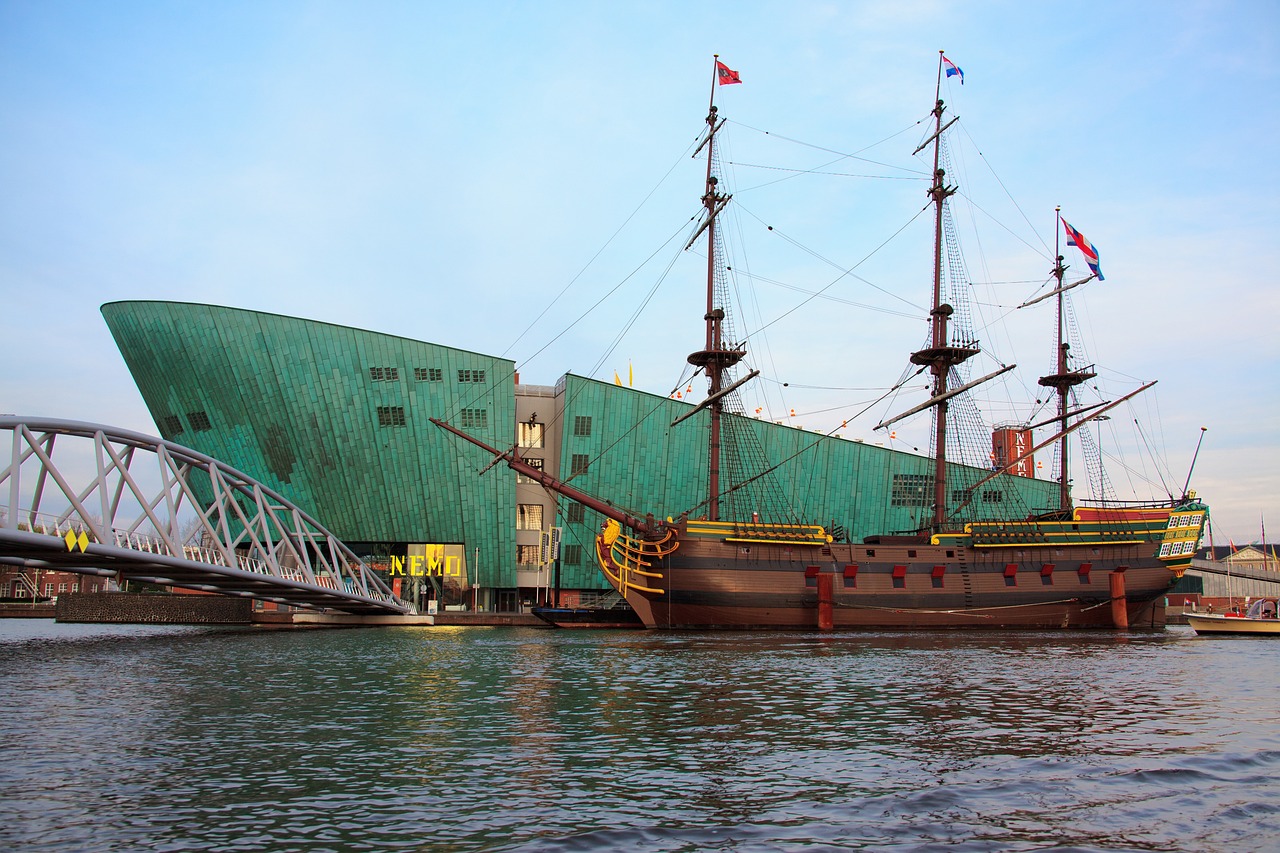
Trams
- Extensive Tram Network: Amsterdam boasts an extensive tram network that covers the entire city. Trams are a popular mode of transportation for both locals and tourists.
- Modern Trams: The trams in Amsterdam are modern, comfortable, and equipped with amenities such as air conditioning and low-floor entry for easy accessibility.
- Tram Lines: The tram network consists of various lines, each denoted by a number. Some popular tram lines include Line 2, Line 5, and Line 9.
The tram system in Amsterdam is well-developed and offers a convenient way to explore the city. Trams run frequently, especially in the city center, making it easy to hop on and off at various attractions and neighborhoods.
Traveling by tram in Amsterdam is a pleasant experience. The modern trams provide a smooth ride, and the large windows offer great views of the city as you travel.
Amsterdam’s tram lines cover different parts of the city, ensuring comprehensive connectivity. Each line has designated stops, which are clearly marked with signs and maps.
Buses
- Extensive Bus Network: Amsterdam has an extensive bus network that complements the tram and train systems. Buses provide additional coverage to areas not served by other modes of transport.
- Electric Buses: Amsterdam is committed to sustainability and has introduced electric buses to its public transportation fleet.
- Night Buses: Night buses, denoted by an “N” followed by a number, operate during the late-night hours when other modes of transport have reduced service.
Amsterdam’s bus network is particularly useful for reaching neighborhoods and attractions that are not directly accessible by trams or trains. Buses operate throughout the day and night, ensuring round-the-clock connectivity.
The introduction of electric buses in Amsterdam aligns with the city’s efforts to reduce emissions and promote eco-friendly transportation. These buses are quiet, emission-free, and contribute to a cleaner environment.
For those enjoying Amsterdam’s nightlife, the night buses provide a reliable way to return home after a late evening out. These buses run at regular intervals and serve popular nightlife areas.
Amsterdam Netherlands Image 2: 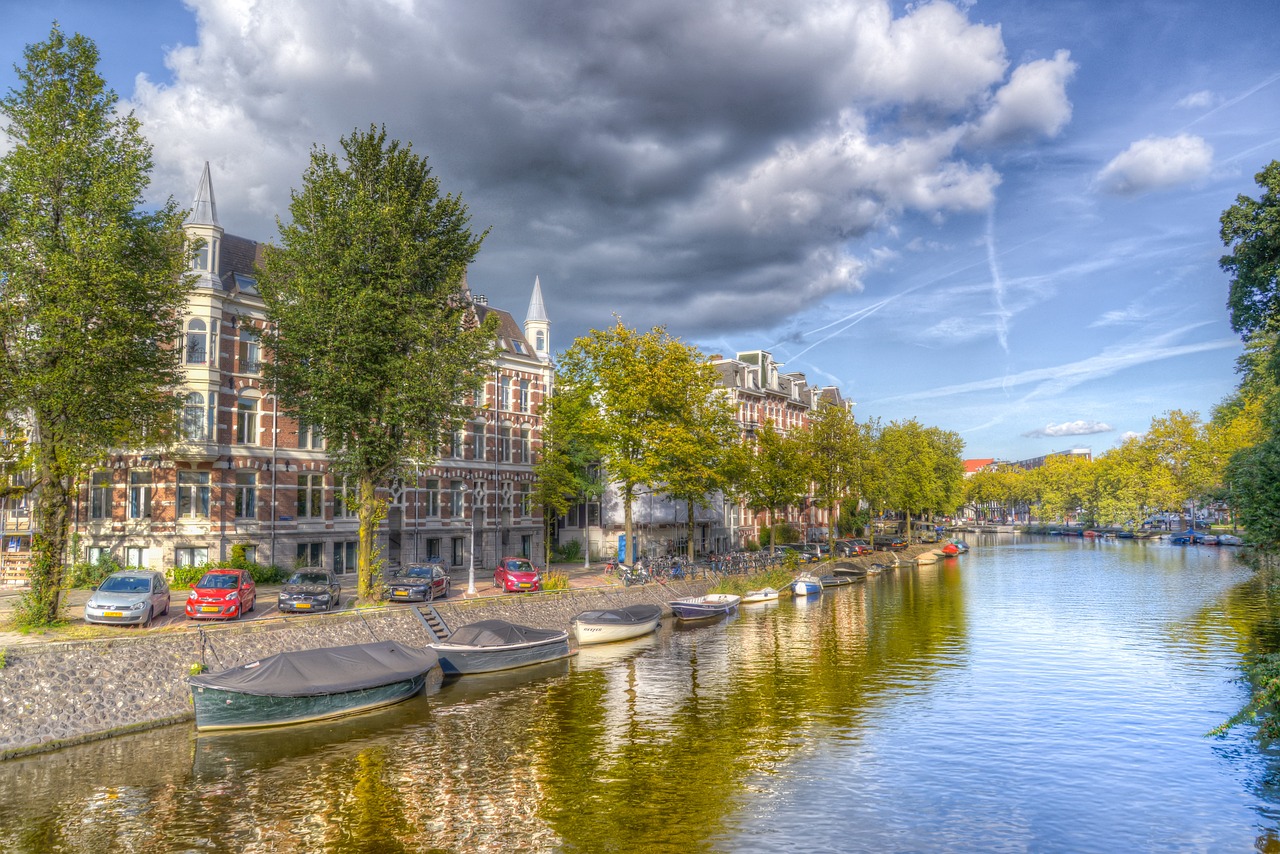
Metro
- Four Metro Lines: Amsterdam’s metro system consists of four lines, denoted by colors: Line 50 (Ring Line), Line 51 (Amstelveen Line), Line 52 (North/South Line), and Line 54 (Gein Line).
- Efficient Metro Service: The metro operates with a high frequency during peak hours, ensuring quick and convenient travel for commuters and visitors.
- Integration with Other Modes: The metro stations are well-integrated with other modes of public transportation, allowing seamless transfers between the metro, trams, buses, and trains.
The metro system in Amsterdam offers rapid transit connections to various parts of the city and its outskirts. The North/South Line, in particular, provides a direct link between the northern and southern parts of the city.
Amsterdam’s metro system is known for its efficiency and punctuality. The trains are modern, spacious, and equipped with amenities for a comfortable journey.
Travelers can easily switch between different modes of transport at metro stations, making it convenient to reach their desired destinations. The integrated ticketing system further simplifies the process.
Ferries
- Free Ferry Service: Amsterdam offers free ferry services across the IJ river, connecting various parts of the city.
- Multiple Ferry Routes: The ferry routes cover different destinations, including Amsterdam Noord and the NDSM Wharf.
- Accessible and Bike-Friendly: The ferries are easily accessible, with ramps and elevators available for passengers with mobility needs. They also accommodate bicycles, allowing cyclists to cross the river with ease.
The free ferry services are not only practical for daily commuters but also provide a unique way to enjoy scenic views of Amsterdam’s waterfront. These ferries are an integral part of the city’s public transportation system.
Whether you want to explore the vibrant neighborhood of Amsterdam Noord or visit the cultural hotspot of NDSM Wharf, the ferry services offer a convenient and enjoyable way to travel.
Amsterdam is a bike-friendly city, and the ferry services make it convenient for cyclists to navigate between different parts of the city. Bicycles are an integral part of Amsterdam’s transportation culture.
Amsterdam Netherlands Image 3: 
Ticketing and Payment
- OV-Chipkaart: The OV-Chipkaart is a contactless smart card used for payment on all modes of public transportation in Amsterdam.
- Single-Use Tickets: For occasional travelers, single-use tickets are available for purchase at ticket vending machines located at stations and major stops.
- Tourist Travel Passes: Amsterdam offers various tourist travel passes that provide unlimited travel on public transportation for a specific duration, such as 24 hours or multiple days.
The OV-Chipkaart is the most convenient and cost-effective way to pay for public transportation in Amsterdam. It can be topped up with credit and offers discounted fares compared to single-use tickets.
If you prefer not to use an OV-Chipkaart, single-use tickets can be purchased for immediate use. These tickets are valid for a single journey and have a time limit, typically 1 to 2 hours.
For visitors planning to extensively explore Amsterdam, tourist travel passes offer convenience and flexibility. These passes can be purchased at ticket offices, tourist information centers, and online.
Tips for Getting Around Amsterdam
- Plan Your Journey: Before setting off, use online journey planners or mobile apps to map out your route and check for any disruptions or delays.
- Be Mindful of Rush Hour: Avoid traveling during peak hours, especially on weekdays, as public transportation can get crowded with commuters.
- Bicycle Rentals: Consider renting a bicycle to experience Amsterdam like a local. The city is bike-friendly, with dedicated cycling lanes and ample bike parking facilities.
Planning your journey in advance will help you navigate Amsterdam’s public transportation system efficiently and avoid unnecessary delays or detours.
If possible, plan your trips outside of rush hour to enjoy a more comfortable and relaxed journey. Early mornings and late evenings are generally quieter.
Exploring Amsterdam on a bicycle allows you to immerse yourself in the city’s culture and enjoy the freedom of moving at your own pace. Numerous bike rental shops are available throughout the city.
Conclusion
Amsterdam’s public transportation system offers a comprehensive network of trains, trams, buses, metro, and ferries, providing residents and visitors with convenient and efficient travel options. Whether you prefer exploring the city by tram, taking a scenic ferry ride, or utilizing the extensive metro system, Amsterdam’s public transportation ensures easy access to all corners of the city. With various ticketing options and a commitment to sustainability, getting around Amsterdam has never been easier.
References
- 9292: www.9292.nl
- GVB: www.gvb.nl
- Nederlandse Spoorwegen: www.ns.nl
- Amsterdam.info: www.amsterdam.info

